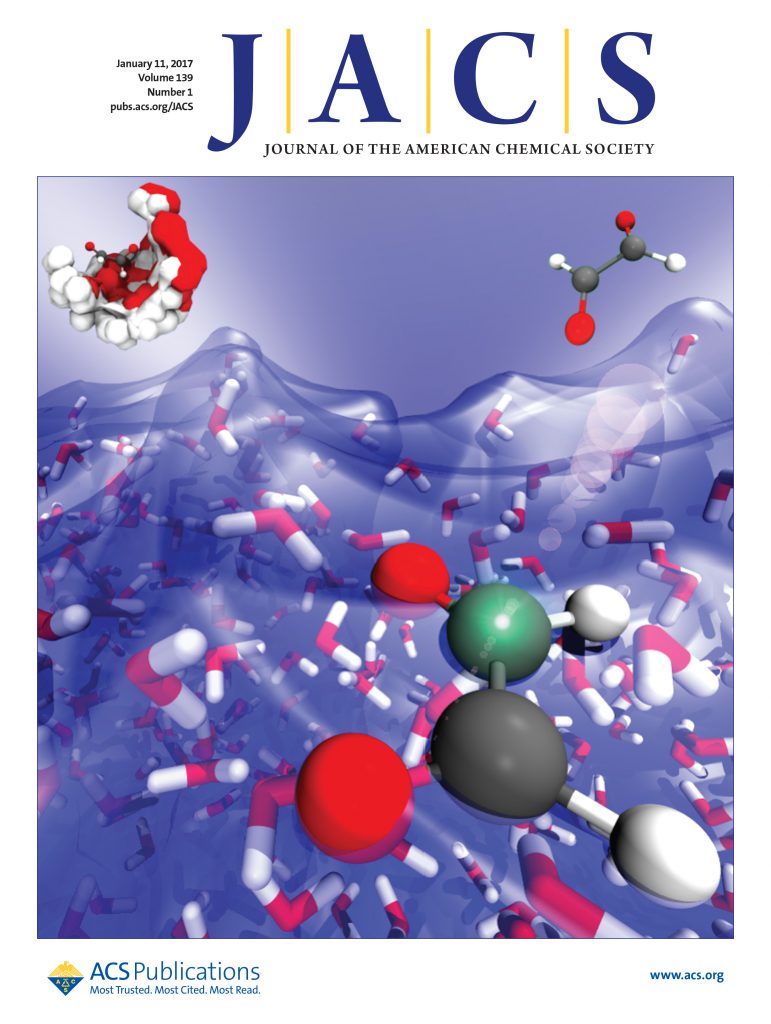Enzymatic Stereoselective Nucleophilic Cyclization Governs Atypical Spirotetronate Assembly in Lucensimycin A Biosynthesis.
IF 15.6
1区 化学
Q1 CHEMISTRY, MULTIDISCIPLINARY
引用次数: 0
Abstract
Lucensimycin A is a structurally unique spirotetronate polyketide featuring a rare spiro[tetronate-hydrophenanthrene] tetracyclic core, distinct from the classical spiro[tetronate-cyclohexene] scaffolds formed via intramolecular Diels-Alder (IMDA) cyclizations. Here, we identified and characterized the luc biosynthetic gene cluster from Streptomyces fagopyri NAX0062, revealing a divergent biosynthetic logic. The pathway begins with type I PKS assembly of a linear polyketide, followed by tetronate ring formation by a canonical tetronate cassette. A flavin-dependent Diels-Alderase (LucM) then catalyzes an IMDA reaction to form a decalin intermediate. Unusually, the Diels-Alderase homologue LucK catalyzes a stereoselective intramolecular nucleophilic cyclization─rather than a pericyclic reaction─to generate the spiro[tetronate-hydrophenanthrene] core, following acetylation by LucN. Oxidative cleavage of a terminal alkene (by LucO3) completes the pathway. Structural and mutational analysis of LucK revealed that Glu16 and Glu85 function as general acid/base catalysts to drive the nucleophilic cyclization reaction, highlighting LucK as a mechanistically distinct cyclase. This work uncovers a previously unrecognized enzymatic strategy for spirocyclic construction and expands the catalytic repertoire of β-barrel enzymes in polyketide biosynthesis.酶立体选择性亲核环化控制Lucensimycin A生物合成中的非典型螺戊酸组装。
Lucensimycin A是一种结构独特的螺四酸酯聚酮,具有罕见的螺[四酸盐-邻菲]四环核心,不同于通过分子内Diels-Alder (IMDA)环化形成的经典螺[四酸盐-环己烯]支架。本研究对fagopyri链霉菌NAX0062的luc生物合成基因簇进行了鉴定和表征,揭示了不同的生物合成逻辑。该途径始于I型PKS线性聚酮的组装,随后是典型四酸盐盒形成的四酸盐环。然后黄素依赖性dielalderase (LucM)催化IMDA反应生成十氢萘中间体。不同寻常的是,Diels-Alderase同源物LucK在LucN乙酰化后催化立体选择性分子内亲核环化──而不是周环反应──生成螺[四酸-邻菲]核。末端烯烃的氧化裂解(由LucO3)完成了该途径。对LucK的结构和突变分析表明,Glu16和Glu85作为一般的酸/碱催化剂驱动亲核环化反应,表明LucK是一种机制独特的环化酶。这项工作揭示了一种以前未被认识到的螺旋环结构的酶促策略,并扩大了β-桶酶在聚酮生物合成中的催化范围。
本文章由计算机程序翻译,如有差异,请以英文原文为准。
求助全文
约1分钟内获得全文
求助全文
来源期刊
CiteScore
24.40
自引率
6.00%
发文量
2398
审稿时长
1.6 months
期刊介绍:
The flagship journal of the American Chemical Society, known as the Journal of the American Chemical Society (JACS), has been a prestigious publication since its establishment in 1879. It holds a preeminent position in the field of chemistry and related interdisciplinary sciences. JACS is committed to disseminating cutting-edge research papers, covering a wide range of topics, and encompasses approximately 19,000 pages of Articles, Communications, and Perspectives annually. With a weekly publication frequency, JACS plays a vital role in advancing the field of chemistry by providing essential research.

 求助内容:
求助内容: 应助结果提醒方式:
应助结果提醒方式:


